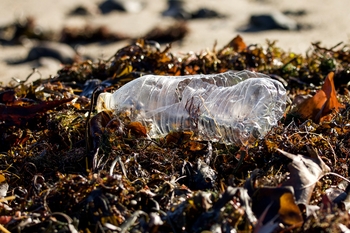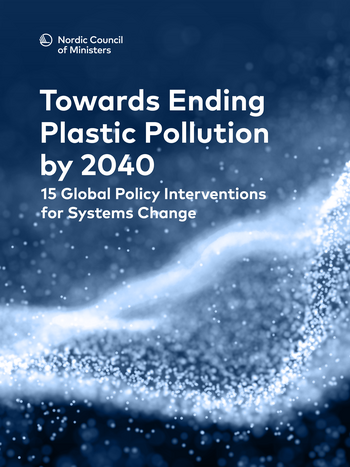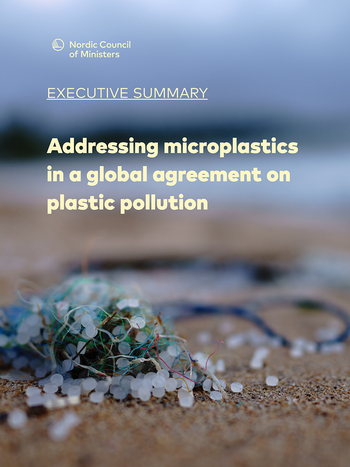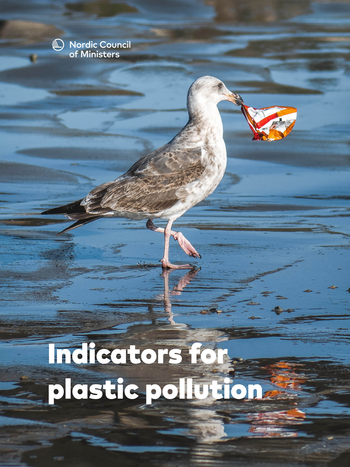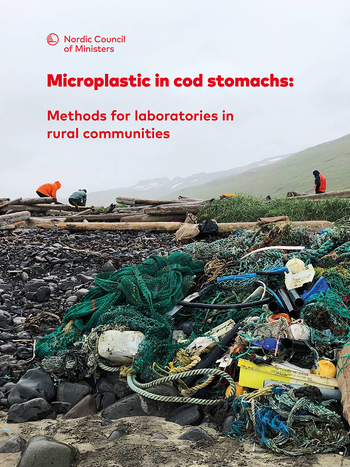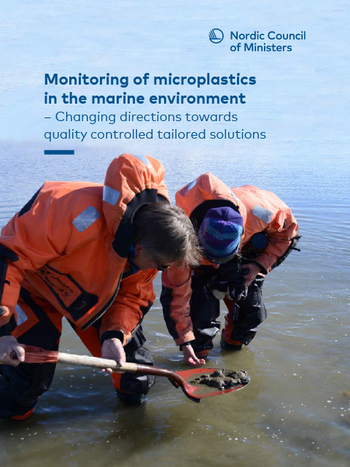Nordic Ministers sign declaration on microplastics

Two years ago, the United Nations Environment Assembly unanimously adopted a historic and ambitious resolution to develop a new legally binding instrument to end plastic pollution. For several years, the Nordic countries have worked to strengthen global commitments to reduce plastic pollution by ensuring a solid knowledge base for the international negotiations.
As Ministers are gathered in New York this week, the Nordic countries consolidate their position with a joint declaration on microplastics. The historic global plastic treaty is set to be finalised by the end of the year.
The Nordic report Towards Ending Plastic Pollution by 2040 published last year concluded that an effective plastic treaty could reduce microplastics releases globally by 70% by 2040 compared to a business-as-usual scenario.
"There is microplastics in the water we drink, the food we eat, the air we breathe and the environment. We see an increasing number of reports of microplastics being found in humans, suggesting that our bodies may also contain microplastics. Plastic contains many toxins that can be harmful to humans, animals, and plants", says Anne Beathe Tvinnereim, Norwegian Minister of international Development.
There is microplastics in the water we drink, the food we eat, the air we breathe and the environment

Anne Beathe Tvinnereim speaking at COP27 in the Nordic Pavilion.
The Nordic Countries call for a legally binding global plastics treaty
The Nordic Countries call for a legally binding global plastics treaty that is comprehensive in scope and addresses the full life cycle of plastics, with dedicated measures for regulating microplastics related to their source and routes of leakage:
- Bans or restrictions on intentionally added microplastics to products.
- Requirements for improved design of products to minimize the release of microplastics by wear and tear.
- Appropriate measures and guidance for specific land and sea-based sources of microplastic release, such as tyres, textiles, artificial grass[2], paint, wastewater, production, recycling and disposal facilities[3] and others.
- Requirements for handling, storing, transporting, and processing of plastic pellets, flakes and powders, supplementing the work in IMO.
- Remediate using the best available techniques and environmental practices to avoid macroplastic degradation exacerbating the spread of microplastics.
With the negotiations on a global plastic agreement, we have a unique opportunity to act globally to reduce microplastic pollution. We have to use this opportunity!
Nordic ambitions on a global treaty on plastics
"The future plastic treaty should develop globally harmonised requirements for sustainable design of plastic products with an aim to minimize the unintentional release of microplastics during the product use and to restrict intentionally added microplastics in products", says Kai Mykkänen, Finnish Minister of Climate and the Environment.
"Degradation of plastic litter is most likely the largest contributor to microplastics in the marine environment. Making sure the instrument address problematic products and production levels will also reduce the spreading of microplastics. We need great political commitment to limit production as well as leakage of plastics", says Romina Pourmokhtari, Swedish Minister for Climate and the Environment.
"It is extremely worrying that microplastics are found in human bodies, and are continuously spread and accumulated in our environment. With the negotiations on a global plastic agreement, we have a unique opportunity to act globally to reduce microplastic pollution. We have to use this opportunity!” Magnus Heunicke, Danish Minister of Environment.
- In March 2022, the UN Environment Assembly adopted a mandate to develop a legally binding international instrument to combat plastic pollution.
- The negotiations are expected to conclude between November 25th and December 1st at the Fifth session of the Intergovernmental Negotiating Committee on Plastic Pollution (INC-5) in Busan, South Korea.
- This year marks the 20th anniversary of the first scientific article using the term microplastics to describe the occurrence of microscopic fragments of plastic in the environment. Since then, our knowledge about the sources, pathways and impacts of plastic pollution has increased exponentially. Scientists are concerned about the extent of damage that microplastics can cause to both humans and the environment.
- As part of Nordic efforts to shed light on the increasing amount of microplastics in our environment, the Climate and Environmental Research Institute NILU in Norway has estimated the amount of microplastics falling down over different geographical locations.
- For several years, the Nordic countries have worked to strengthen global commitments to reduce plastic pollution through Nordic co-operation by ensuring a solid knowledge base for the international negotiations.
[1] Based on modelling from the article by Evangeliou, N., Grythe, H., Klimont, Z. et al. Atmospheric transport is a major pathway of microplastics to remote regions. Nat Commun 11, 3381 (2020).
[2] The Norwegian Environment Agency (2020). «Norske landbaserte kilder til mikroplast».
[3] Umarie, W. I., Bagastyo, A. Y. (2024). Microplastics Identification in Plastic Recycling Facility: Removal Efficiencies of the Treatment Plants and Its Potential Release to the Environment. Journal of Ecological Engineering, 25(9), 303-315.
